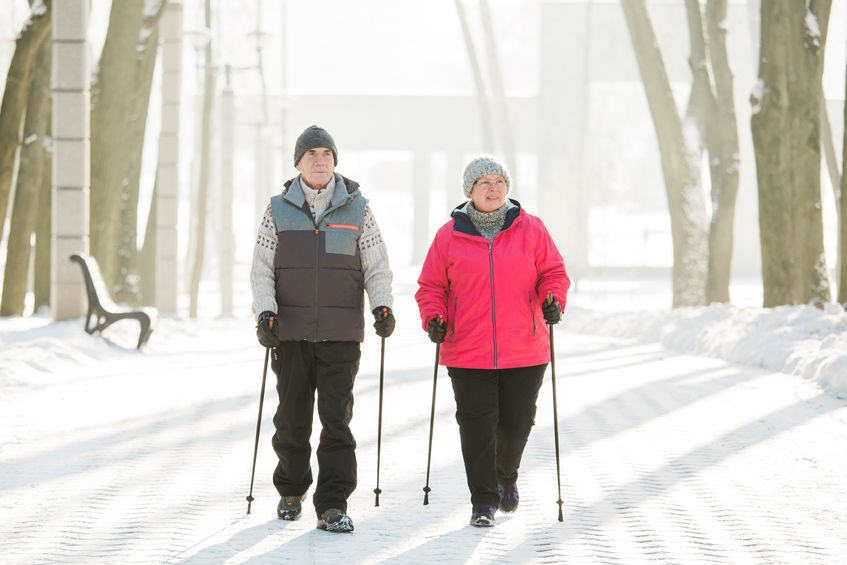Our bodies are constantly using input from our environment to help assess and respond to our environment. This includes our balance. Falls are one of the primary causes of accidental injury deaths in the world.1 In the winter months, when icy conditions arise, we must be extra vigilant about improving our safety outside. Slips and falls in icy conditions are one of the most common causes of fall-related injuries. Read below to gain a couple of pointers to improve your safety this winter. Please also refer to our post: https://valleyphysicaltherapymt.com/avoiding-falls-in-winter-conditions/ for more information on keeping you and your family safer in winter conditions—such as proper shoe wear, assistive devices, and important tips for walking in winter conditions safely.
Our bodies contain many systems that play important roles related to balance. Here is some information on a few of those systems and tips to help you in icy conditions:
Visual system: The visual system gives us feedback on what obstacles to expect. That feedback includes providing our minds with what to anticipate while walking—changes in terrain, such as sidewalk to grass, an icy patch, or rock to step over. When there is not as much daylight during the winter months, we often find ourselves walking in dark or dimly lit environments. This reduces the extent to which we can rely on our visual system for balance and can make relatively simple tasks, such as going from our car into the house, more difficult.
Somatosensory system: Nerves from our joints and soft tissues send messages to our central nervous system about where we are in space. When we are on uneven terrain, these signals become more complex. If you have peripheral neuropathy, these signals tend to be even more diminished. We must rely on other balance systems, such as our vision and vestibular system, when we don’t have as much information to rely on from our somatosensory system. Slick surfaces are dangerous for anyone. Having difficulty feeling what the ground is like underneath you can decrease your balance reactions’ effectiveness.
Vestibular system: This is also known as our inner ear. This organ senses all sorts of information about our body’s orientation to gravity and is more active with head movements. This is especially critical when we do not have as much information to rely on from other balance systems. Vestibular processes can be trained and improved as we age with exercise and specific training.2 Using the pointers mentioned below can help give your brain more information that can help you avoid a slip or fall.One way to improve your balance is to bring extra awareness to your surroundings. This allows your body to access greater “anticipatory” balance responses. Below are a number of tips to consider.
Increase visual input:
Carry a flashlight or use your smartphone for lighting your path
Park in well-lit areas of parking lots and streets when able
Turn on porch lights when you know you may not be back home until after dark.
If a surface looks icy, try navigating around the icy section. For example, if you are walking on the sidewalk and it looks icy, you may want to step off onto the grass next to the sidewalk until you can see the path is dry and not slick.
Sometimes a slip occurs, even when we have done everything we could have to anticipate how to move across wet or icy surfaces. Reactive balance responses are what we then rely on to prevent a fall. Response during “early stance,” or when we first make contact between our foot and the ground, has been shown as a critical time for balance recovery.
Wear anti-slip devices on your shoes; the aim is to increase friction between your feet and the ground.
Take trekking poles, your cane, or other appropriate assistive devices when you know you may encounter uneven or slick terrain to help improve your stability and balance. If you have not already, it can be helpful to obtain appropriate instruction on the proper use of walking aids.1
Think “Walk like a penguin,” taking small steps. Make your base of support wider – feet about hip-distance apart, and try to “shuffle” your feet across suspicious looking surfaces.
Fill a little bag or container with kitty litter or ice-melting salt with you to sprinkle in areas that look potentially icy.
Additional safety measures:
- Walk with someone, or take your phone or another device that you can use to alert someone in case you need help.
If you already have difficulty with your balance or a history of falling, talk with your doctor or physical therapist. Many aspects of the balance systems and responses to balance challenges can be improved with the proper training. We’d rather see you before an injury occurs to help train your balance systems to work as efficiently as possible. Physical therapy can help in many ways. Physical activity, structured home exercise programs for aerobic, strength, and balance training can help reduce falls and injury. 1,2,3 Below is an article through the American Physical Therapy Association that provides resources supporting how physical therapy can help address fall risk.
1. https://www.apta.org/patient-care/public-health-population-care/balance-and-falls/research-on-falls
Apta.org. 2020. Value Of Physical Therapy In Reducing Falls. [online] Available at: <https://www.apta.org/patient-care/public-health-population-care/balance-and-falls/research-on-falls> [Accessed 22 December 2020].
2. Mohamed, A. and Jan, Y., 2020. Effect of Adding Proprioceptive Exercise to Balance Training in Older Adults with Diabetes: A Systematic Review. Current Diabetes Reviews, 16(4), p.327.
3. Battilana, F., et al., 2020. Exercise‐linked improvement in age‐associated loss of balance is associated with increased vestibular input to motor neurons. Aging Cell, 19(12).

